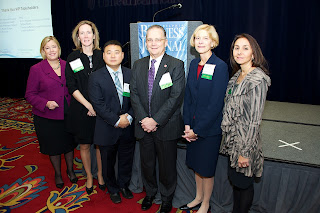With the holiday season comes a stress level all its own. Will it be possible to get the family together for the holiday card photo sometime before January? Do you use your mother or mother-in-law’s Latke recipe? Do you really need to spend $50 on a new Furby for your nephew, or can you just re-gift the one your child stopped playing with 10 years ago?
If the holidays weren’t enough to drive you crazy, the end of the year puts you face-to-face with the past January’s good health intentions. You put enough money in your health savings account for that root canal and you were going to plan your annual dermatologist checkup and yearly mammogram. But then life happened, and that big meeting came up when you were thinking of calling the dentist, and the kids needed you to make something for the bake sale the morning you were going to schedule your appointments. Now it’s December 14 and between the Christmas cookies and holiday shopping, you’re trying to squeeze in that appointment to have your teeth drilled or that adjustment at the chiropractor to avoid losing the $400 you socked away in your health savings account.
We’ve all been there. As they say, life is what happens when you’re busy making other plans. But this year, I have a solution for you. It may not clear up the latke showdown, but it can make your 2013 health plan flow a bit smoother.
This January, make a list of all your preventative care
screenings. Once you get them all in one place, pick a logical date, month, time
of year, etc. that will help you remember when to schedule your appointments.
For example: October is Breast Cancer Awareness Month – call now to make your
appointment for October 1. Or, in May, Memorial Day marks the unofficial start
of summer (it’s also Skin Cancer Awareness Month), get to the dermatologist for
your yearly skin check and stop at the drug store afterward to stock up on
sunscreen. Or, pick the first week of the New Year or your birth month –
whatever date or time of year to that you can attach some meaning to as a way
to help you remember to make – and make it to –your appointments.
‘Tis the season for making lists, so what better time than now
to take a few moments and plan out your 2013 year in health. You’ll be able to avoid an end-of-year mad
dash to the doctor and stop worrying about having to decide between your health
and money.
------------------------------------
With the passage of the Affordable Care Act, there has never
been a better time to organize your preventive care visits, for which, thanks
to the new law, there is either no cost or a co-pay. Check out this UHC
TV video for some clarification on what’s considered preventive care.





.jpg)

.jpg)

